Topics on this page

Regular Exams and Cleanings
Regular exams are an important part of maintaining your child's oral health. During your child’s regular exam, we will:
- Check for any problems that may not be seen or felt
- Look for cavities or any other signs of tooth decay
- Inspect the teeth and gums for gingivitis and signs of periodontal disease
- Perform a thorough teeth cleaning
Your child’s exam will take about 30-40 minutes. Each regular exam includes a detailed teeth cleaning, in which we will clean, polish, and rinse the teeth to remove any tartar and plaque that have built up on the tooth’s surface.
Visiting our office every six months gives you the chance to talk to the doctor about any questions you may have about your child’s oral health. Regular exams are offered by appointment only, so please contact our practice today to schedule your child’s next dental exam and teeth cleaning.
Bonding/Fillings
 Bonding/fillings are conservative ways to repair a chipped tooth or a small cavity. During dental bonding, a white filling is placed onto your child's tooth to improve its appearance. The filling “bonds” with the tooth, and because it comes in a variety of tooth-colored shades, it closely matches the appearance of your child's natural teeth.
Bonding/fillings are conservative ways to repair a chipped tooth or a small cavity. During dental bonding, a white filling is placed onto your child's tooth to improve its appearance. The filling “bonds” with the tooth, and because it comes in a variety of tooth-colored shades, it closely matches the appearance of your child's natural teeth.
Bonding/fillings can be used on front or back teeth, depending on the location and extent of tooth decay.
Bonding is less expensive than other cosmetic treatments and can usually be completed in one visit to our office. However, bonding can stain and is easier to break than other cosmetic treatments, such as porcelain veneers. If it does break or chip, tell your doctor. The bonding can generally be easily patched or repaired in one visit.
Dental Crowns

Crowns are placed on baby teeth when there is extensive decay or a nerve treatment has been performed.
Crowns are “cemented” onto an existing tooth and fully cover the portion of the tooth above the gum line. In effect, the crown becomes the tooth’s new outer surface. These premade crowns come in stainless steel and porcelain.
Stainless steel crowns are usually the number one choice for pediatric dentists when it comes to restoring a child's damaged teeth because they are strong, durable, reliable, and time-tested. Most often, they are used to restore the back teeth, known as molars and premolars. A crowned tooth must be brushed and flossed just like other teeth.
Extractions
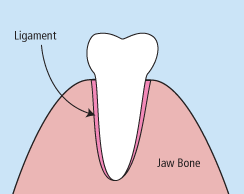 There are times when it is necessary to remove a tooth. Sometimes a baby tooth has misshapen or long roots that prevent it from falling out as it should, and the tooth must be removed to make way for the permanent tooth to erupt. At other times, a tooth may have so much decay that it puts the surrounding teeth at risk of decay, so the doctor may recommend its removal. Infection, orthodontic correction, or problems with a wisdom tooth can also require the removal of a tooth.
There are times when it is necessary to remove a tooth. Sometimes a baby tooth has misshapen or long roots that prevent it from falling out as it should, and the tooth must be removed to make way for the permanent tooth to erupt. At other times, a tooth may have so much decay that it puts the surrounding teeth at risk of decay, so the doctor may recommend its removal. Infection, orthodontic correction, or problems with a wisdom tooth can also require the removal of a tooth.
When it is determined that a tooth needs to be removed, your child’s dentist may extract the tooth during a regular checkup or may request another visit for this procedure. The root of each tooth is encased within the jawbone in a “tooth socket”, and the tooth is held in that socket by a ligament. In order to extract a tooth, the dentist must expand the socket and separate the tooth from the ligament holding it in place. While this procedure is typically very quick, it is important to share with the doctor any concerns or preferences for sedation.
Fluoride
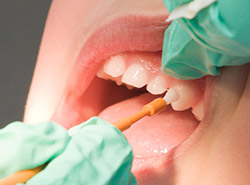 Fluoride is effective in preventing cavities and tooth decay and in preventing plaque from building up and hardening on the tooth’s surface. A fluoride treatment in a dentist’s office takes just a few minutes. After the treatment, your child may be asked not to eat hard food, drink hot beverages, or brush their teeth for at least six hours in order to allow the teeth to absorb the fluoride. Depending on your child’s oral health or the doctor’s recommendation, fluoride treatment may be required every three or six months.
Fluoride is effective in preventing cavities and tooth decay and in preventing plaque from building up and hardening on the tooth’s surface. A fluoride treatment in a dentist’s office takes just a few minutes. After the treatment, your child may be asked not to eat hard food, drink hot beverages, or brush their teeth for at least six hours in order to allow the teeth to absorb the fluoride. Depending on your child’s oral health or the doctor’s recommendation, fluoride treatment may be required every three or six months.
Mouthguards
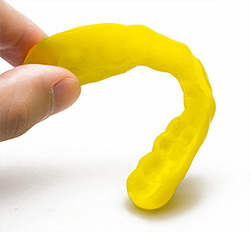 Whether your child wears braces or not, protecting his or her smile while playing sports is essential. Mouthguards help protect the teeth and gums from injury. If your child participates in any kind of full-contact sport, the American Dental Association recommends that he or she wear a mouthguard. Choosing the right mouthguard is essential. There are three basic types of mouthguards: the pre-made mouthguard, the “boil-and-bite” fitted mouthguard, and a custom-made mouthguard from the dentist. When you choose a mouthguard, be sure to pick one that is tear-resistant, comfortable, and well-fitted for your mouth, easy to keep clean, and does not prevent your child from breathing properly. Your dentist can show your child how to wear a mouthguard properly and how to choose the right mouthguard to protect his or her smile.
Whether your child wears braces or not, protecting his or her smile while playing sports is essential. Mouthguards help protect the teeth and gums from injury. If your child participates in any kind of full-contact sport, the American Dental Association recommends that he or she wear a mouthguard. Choosing the right mouthguard is essential. There are three basic types of mouthguards: the pre-made mouthguard, the “boil-and-bite” fitted mouthguard, and a custom-made mouthguard from the dentist. When you choose a mouthguard, be sure to pick one that is tear-resistant, comfortable, and well-fitted for your mouth, easy to keep clean, and does not prevent your child from breathing properly. Your dentist can show your child how to wear a mouthguard properly and how to choose the right mouthguard to protect his or her smile.
Nightguards
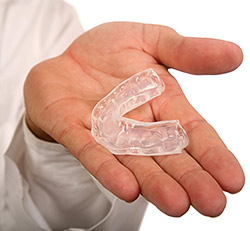 If your child often wakes up with jaw pain, earaches, or headaches, or if you see your child clenching or grinding his or her teeth, your child may have a common condition called “bruxism”. Many people do not even know that they grind their teeth, as it often occurs when one is sleeping. If not corrected, bruxism can lead to broken teeth, cracked teeth, or even tooth loss.
If your child often wakes up with jaw pain, earaches, or headaches, or if you see your child clenching or grinding his or her teeth, your child may have a common condition called “bruxism”. Many people do not even know that they grind their teeth, as it often occurs when one is sleeping. If not corrected, bruxism can lead to broken teeth, cracked teeth, or even tooth loss.
There is an easy, non-invasive treatment for bruxism: nightguards. Nightguards are an easy way to prevent the wear and damage that teeth-grinding causes over time. Custom-made by a dentist from soft material to fit the teeth, a nightguard is inserted over your child’s top or bottom arch and prevents contact with the opposing teeth.
Pulpotomy
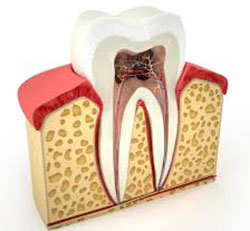 If your child’s primary tooth has extensive decay or has been damaged by trauma, action may be needed to restore the integrity of the tooth and prevent infection from spreading to surrounding teeth. After a set of X-rays are taken, your dentist will be able to assess the extent of the infection and recommend one of two options, a pulpotomy or a pulpectomy.
If your child’s primary tooth has extensive decay or has been damaged by trauma, action may be needed to restore the integrity of the tooth and prevent infection from spreading to surrounding teeth. After a set of X-rays are taken, your dentist will be able to assess the extent of the infection and recommend one of two options, a pulpotomy or a pulpectomy.
If the decay or trauma is confined to the crown of the tooth, a pulpotomy may be recommended. When a cavity gets really deep, close to the pulp of a tooth, or even into the pulp, the pulpal tissue becomes irritated and inflamed. A pulpotomy is when the inflamed pulp chamber, usually on a baby molar, is removed. The dentist will remove all the infected material in the pulp of the crown only, leaving the living tooth root intact. After a pulpotomy on a baby molar, the empty space will be filled with dental cement and a stainless steel crown will be placed to restore the tooth.
Sealants
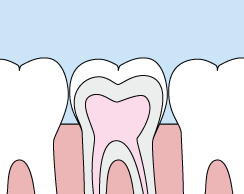
Dental sealants act as a barrier to prevent cavities. They are a white coating usually applied to the chewing surfaces of the back teeth (premolars and molars) where decay occurs most often.
Thorough brushing and flossing help remove food particles and plaque from smooth surfaces of teeth. But toothbrush bristles cannot reach all the way into the depressions and grooves to extract food and plaque. Sealants protect these vulnerable areas by “sealing out” plaque and food.
Sealants are easy to apply. The sealant is painted onto the tooth enamel, where it bonds directly to the tooth and hardens. As long as the sealants remain intact the tooth surface will be protected from decay. During your regular dental visits, the dentist will check the condition of the sealants and reapply them when necessary.